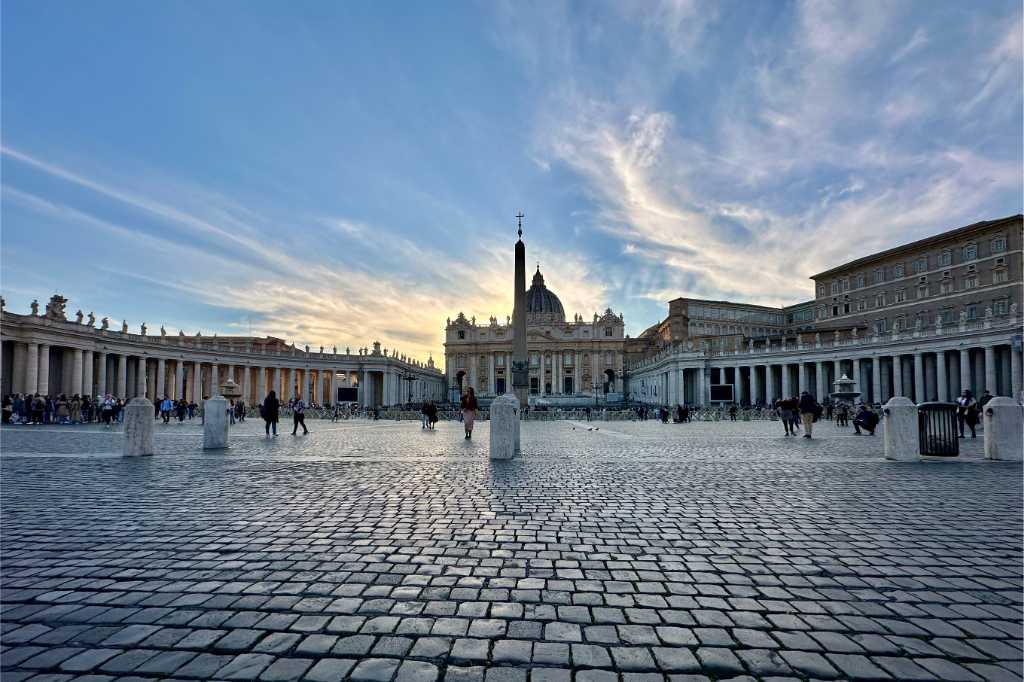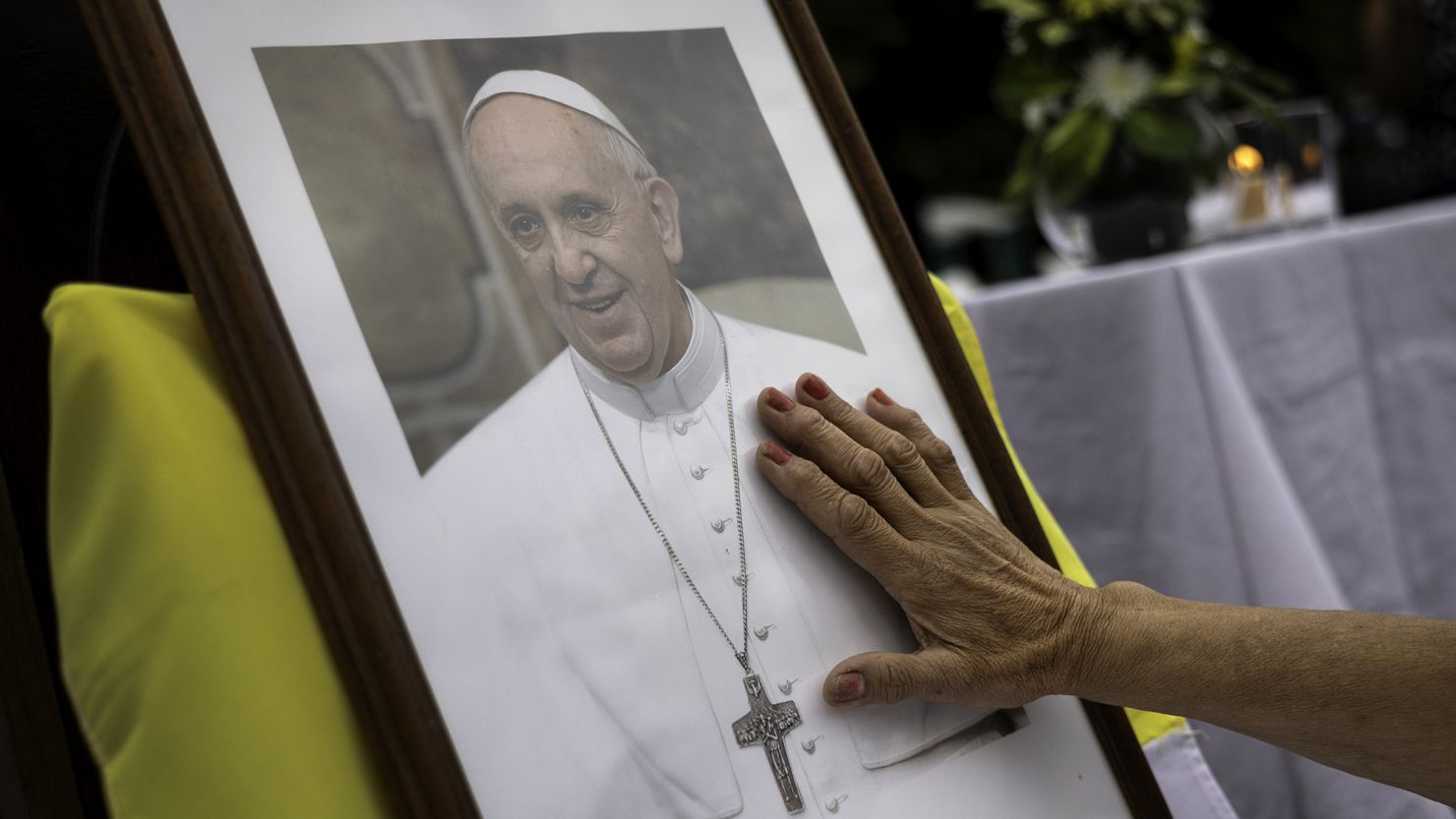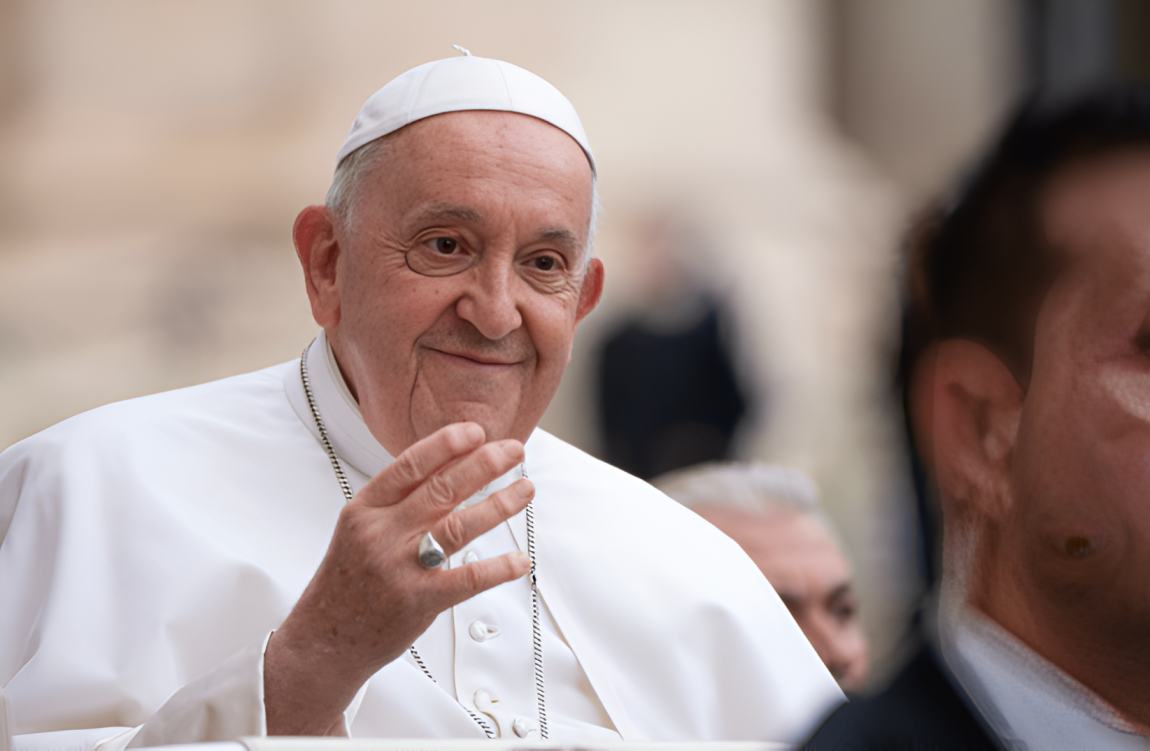The late Pope Francis had recently approved a simpler funeral procedure for when the head of the Catholic Church dies, moving away from the elaborate traditions followed by his predecessors.
Traditionally, papal funerals have been marked by detailed ceremonies, including the burial of the Pope in three coffins, one of cypress, another of lead, and the outermost of oak.
This custom, upheld for years, will not be followed now that Pope Francis had died.
Instead, as reported by the BBC, he chose a more modest send-off.
Pope Francis will be buried in a simple wooden coffin that is lined with zinc.
He had also made changes to how the body would be presented to mourners.
In past funerals, the body of a deceased Pope was placed on a raised platform known as a catafalque in St Peter’s Basilica, allowing the public to view it.
Pope Francis has removed this tradition. Under his plan, the body will remain inside the coffin, but the lid will be taken off to allow mourners to pay their respects.
In another major change, Pope Francis will not be buried within the Vatican grounds.
He will be the first Pope in more than a hundred years to be buried outside the Vatican.
His final resting place will be the Basilica of St Mary Major, one of the four main papal basilicas in Rome.
The Vatican on Tuesday announced that Pope Francis died on Easter Monday, at the age of 88.
"Pope Francis died on Easter Monday, April 21, 2025, at the age of 88 at his residence in the Vatican's Casa Santa Marta," the Vatican said on Monday on X.
Cardinal Kevin Ferrell, the Vatican camerlengo, said the Pope died at 7:35 am Monday morning.
"At 7:35 this morning, the Bishop of Rome, Francis, returned to the home of the Father. His entire life was dedicated to the service of the Lord and of his Church,″ Farrell said in the announcement. He taught us to live the values of the Gospel with faithfulness, courage, and universal love, especially for the poorest and most marginalised," he said.
"With immense gratitude for his example as a true disciple of the Lord Jesus, we commend the soul of Pope Francis to the infinite merciful love of the One and Triune God."
 St. Peter’s Square. PHOTO/Romewise
St. Peter’s Square. PHOTO/Romewise
Silence at St. Peter’s Square
Meanwhile, sombre silence settled over the usually lively St. Peter’s Square on Monday as mourners and onlookers gathered at the heart of Catholicism to reflect on the passing of Pope Francis.
Groups of Catholic priests and nuns stood quietly in threes and fours, heads bowed in prayer, fingering rosaries beneath the midday sun, just hours after the Vatican confirmed the death of the 88-year-old Pope.
Even the steady flow of tourists entering the vast St. Peter’s Basilica did so with a subdued and reflective demeanor.
"He always spoke up for the most vulnerable, the forgotten. Even yesterday, he was still calling for global peace," said Venezuelan seminarian Riccardo Vielma, 31, speaking to AFP.
 A hand over the portrait of the late Pope Francis. PHOTO/GETTY
A hand over the portrait of the late Pope Francis. PHOTO/GETTY
The process of selecting a new Pope
When the Pope passes away or steps down, the Catholic Church enters a phase called Sede Vacante, meaning "the seat is vacant."
During this time, the position of the Pope is officially unfilled.
A new Pope is chosen through a process known as the papal conclave, which follows specific and well-established procedures set by the Church.
The election of a new Pope during the papal conclave is shaped by a mix of tradition, theological principles, and political dynamics.
Although there is no official campaigning, various important factors influence the cardinals’ decisions.
They take into account the current condition of the Catholic Church and the challenges it faces, ranging from doctrinal disputes and governance reforms to interfaith relations, the Church's role in a secular world, and the expansion of Catholicism across different regions.
Typically, the cardinals seek someone with deep theological understanding, proven leadership as a bishop or cardinal, strong administrative abilities, particularly if significant reforms are needed, and the capacity to engage and inspire Catholics globally.
The selection of a new Pope also involves various geopolitical and regional considerations.
While the papacy was historically dominated by Italians, recent years have seen a push for broader international representation.
Cardinals may favor candidates from regions where Catholicism is rapidly expanding, such as Latin America, Africa, or Asia.
Another subtle yet notable factor is the presence of informal factions within the College of Cardinals.
Though the election is a deeply spiritual process, cardinals often align based on theological perspectives—whether progressive, conservative, or reformist—and may back candidates who share their vision for the Church’s future.
When a Pope passes away, as was the case with Pope Francis, the Camerlengo (Cardinal Chamberlain) is responsible for officially confirming the death and overseeing the arrangements for the papal funeral—a highly ceremonial event guided by strict protocols.
As preparations for the papal conclave begin, cardinals from around the world gather at the Vatican.
During this period, the College of Cardinals takes on temporary leadership of the Church, meeting regularly to reflect on the Church’s current needs and direction.
The College of Cardinals is a group of senior Catholic leaders appointed by the Pope.
They act as his primary advisors and, most crucially, are responsible for electing a new Pope when the seat becomes vacant.
This body is made up of cardinal bishops, cardinal priests, and cardinal deacons, each with distinct roles within the Church hierarchy.
Only cardinals who are under the age of 80 are eligible to vote and are summoned to the Vatican for the conclave.
Once assembled, the Sistine Chapel—within the Pope’s official residence—is readied for the proceedings, and all external communication is cut off to maintain absolute secrecy.
Before the conclave officially begins, the voting cardinals swear an oath of secrecy.
The process is initiated with the traditional call "Extra Omnes" (“Everyone Out”), indicating that only those eligible may remain.
A special mass, Pro Eligendo Pontifice ("For the Election of the Pontiff"), is celebrated to seek divine guidance.
Voting takes place through secret ballots. Each cardinal writes the name of his chosen candidate, and for a Pope to be elected, he must secure a two-thirds majority.
After each vote, the ballots are burned: black smoke (fumata nera) signals an inconclusive vote, while white smoke (fumata bianca) announces the successful election of a new Pope.
If several rounds are inconclusive, cardinals may hold discussions to help build consensus around a potential candidate.
When a candidate receives the required number of votes, he is asked whether he accepts the role of Supreme Pontiff.
Upon acceptance, he selects a papal name.
The senior cardinal deacon then steps onto the balcony of St. Peter’s Basilica to declare Habemus Papam—“We have a Pope”—and introduces the new Pontiff, who appears shortly after to deliver his first blessing.
 The late Pope Francis. PHOTO/Rolling Stone
The late Pope Francis. PHOTO/Rolling Stone
Milestones in the life of Pope Francis
December 17, 1936: Jorge Mario Bergoglio is born in Buenos Aires to an accountant father and a housewife mother from an Italian emigrant family.
September 21, 1953: Receives his calling to become a priest after being moved to go to church while on his way to a school event. He later described it as a day that “changed my life.
1957: Undergoes surgery to remove part of his lung.
March 11, 1958: Joins the Jesuit order as a novice after studying chemical engineering at university.
December 13, 1969: Ordained as a priest.
July 31, 1973: Becomes leader of Argentina’s Jesuits, a role he holds for six years.
1980: Returns to parish work amid tensions in the Jesuit order, serving as a parish priest and rector at a college in San Miguel.
1986: Travels to Germany, later moves to Cordoba, and returns to Buenos Aires in 1992 as auxiliary bishop.
February 28, 1998: Appointed archbishop of Buenos Aires.
February 21, 2001: Made cardinal by Pope John Paul II.
March 13, 2013: Elected the 266th pope after Pope Benedict XVI resigns. He chooses the name Francis in honour of Francis of Assisi.
July 8, 2013: Makes first trip outside Rome to Lampedusa, where he criticises the "globalisation of indifference" and highlights the migrant crisis.
July 11, 2013: Begins reform of the Vatican’s penal code to address sexual abuse against minors and tackle corruption.
July 29, 2013: On a flight back from Brazil, says: "If someone is gay and is searching for the Lord and has good will, then who am I to judge him?"
June 18, 2015: Publishes second encyclical "Laudato si", calling for action on climate change.
February 12, 2016: Holds historic meeting with Patriarch Kirill of the Russian Orthodox Church, the first in nearly 1,000 years.
May 23, 2016: Hosts Sheikh Ahmed al-Tayeb, grand imam of Al-Azhar mosque, in a historic audience at the Vatican.
April 11, 2018: Acknowledges “grave errors” in his handling of child sexual abuse cases in Chile and asks for forgiveness.
September 22, 2018: Announces the first-ever agreement between China and the Vatican on bishop appointments.
March 27, 2020: Delivers "Urbi et Orbi" blessing alone in an empty St Peter’s Square during the COVID-19 lockdown.
October 21, 2020: Voices support for same-sex civil unions in a documentary.
March 6, 2021: Visits Iraq and meets Grand Ayatollah Ali al-Sistani in the first papal visit to the country.
July 4, 2021: Undergoes successful colon surgery and spends 10 days in hospital.
June 5, 2022: Brings into effect a new Apostolic Constitution, concluding a major reform of Church governance.
January 5, 2023: Leads funeral service for Pope Benedict XVI in St Peter’s Square.
March 29, 2023: Hospitalised for a respiratory infection and stays three nights.
June 7, 2023: Admitted again for hernia surgery, staying nine nights.
September 3, 2024: Begins a 12-day trip to Indonesia, Papua New Guinea, East Timor, and Singapore—the longest trip of his papacy at age 87.
February 14, 2025: Hospitalised with bronchitis, which develops into double pneumonia.
April 21, 2025: Pope Francis dies at the age of 88.

